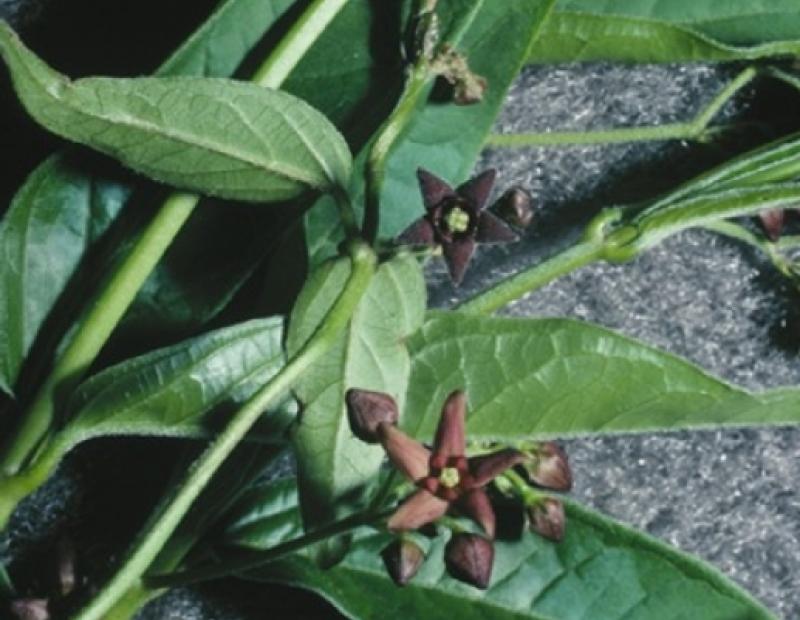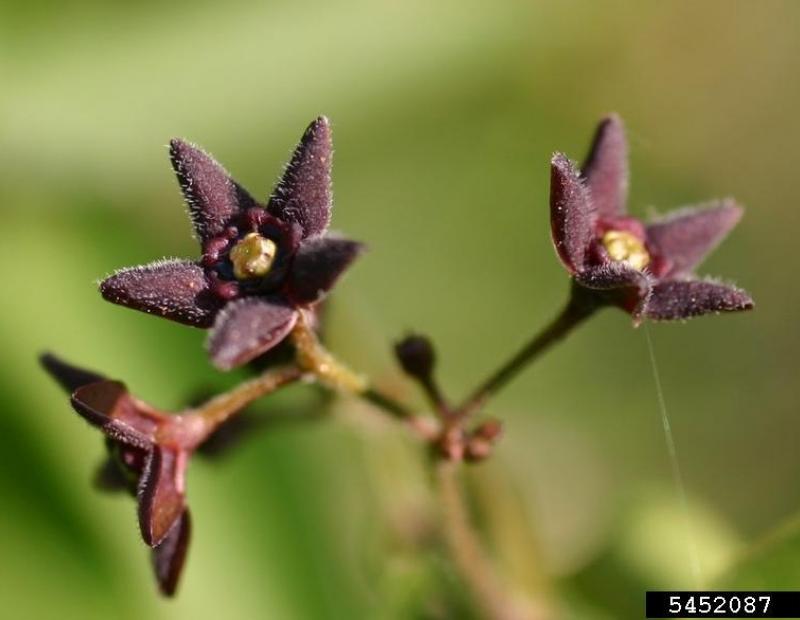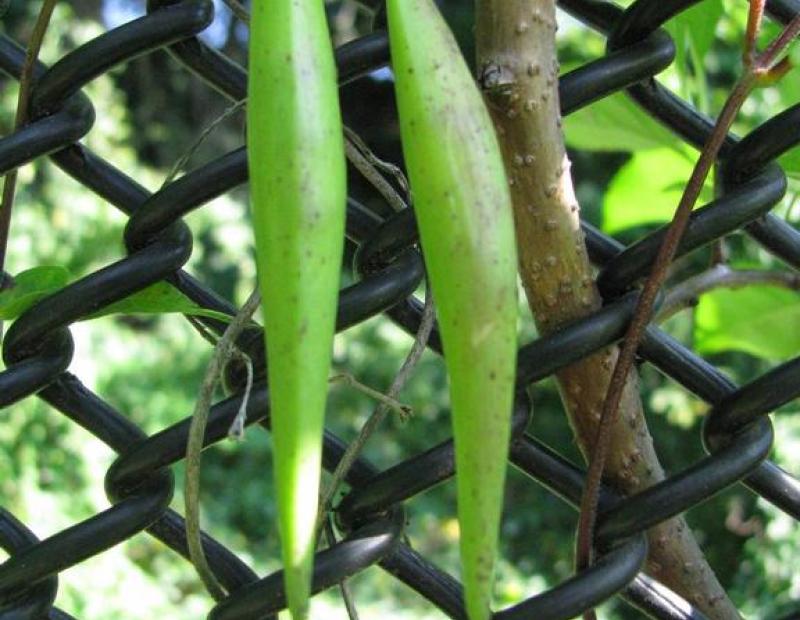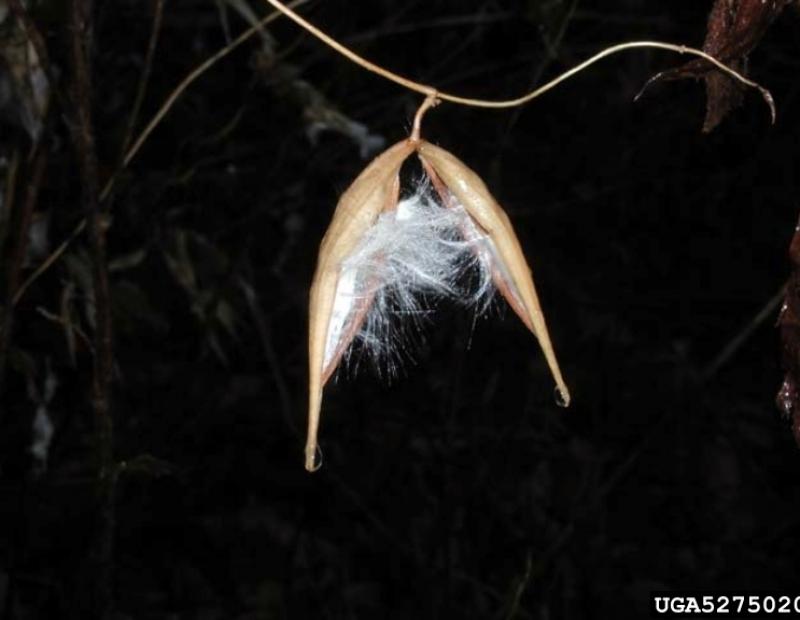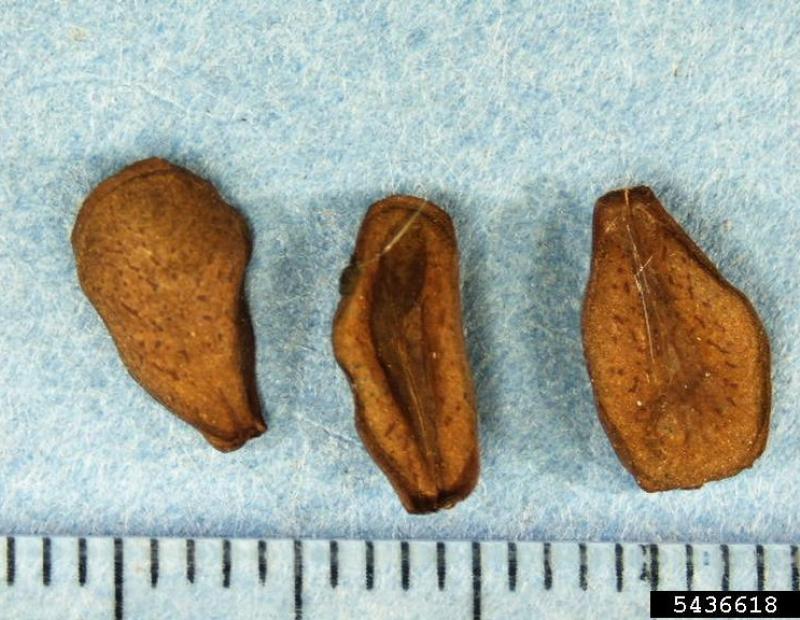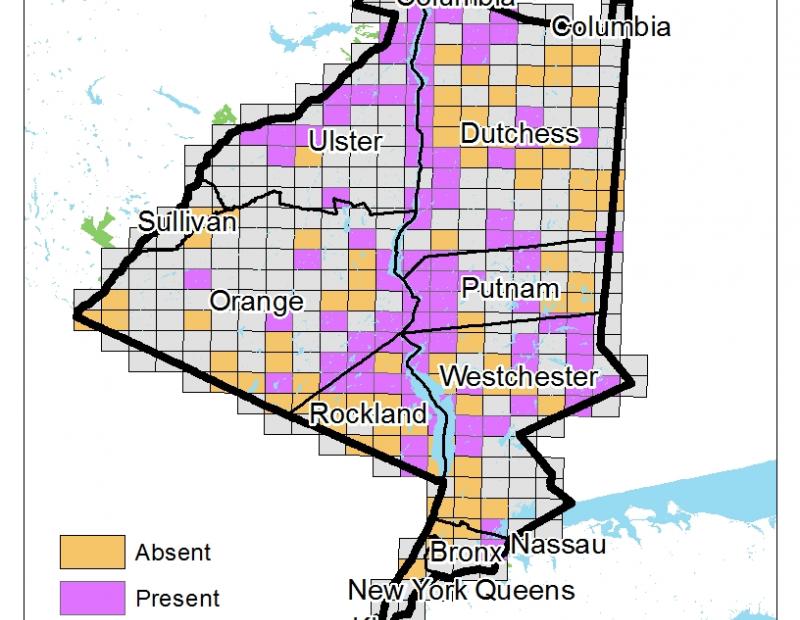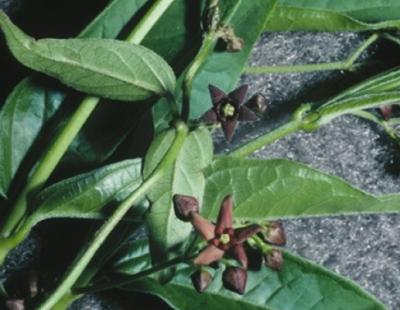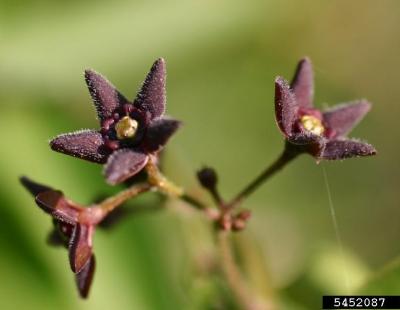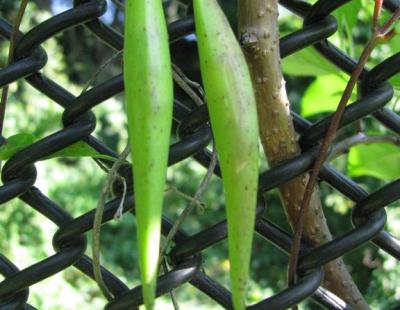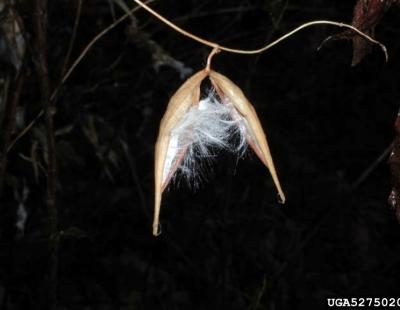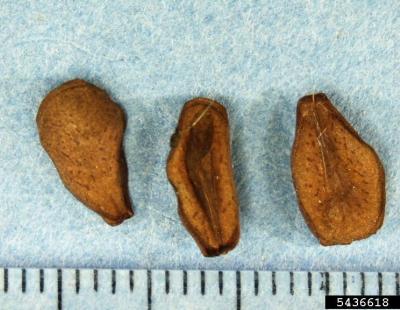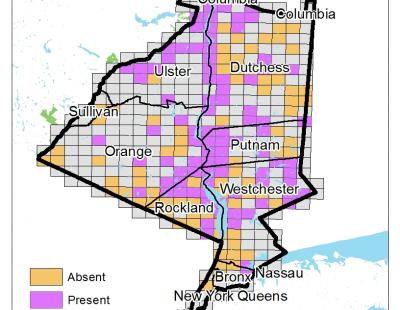Vertical Tabs
- Black Swallowwort is a member of the Dogbane family (Apocynaceae).
- A member of the milkweed family, black swallowwort is an herbaceous, perennial vine twining up to 6-7 feet in length. The vine exudes the same milky white sap when damaged as its native milkweed counterparts. Most conspicuous in late summer to early fall, the vine produces long, tear-drop shaped seed pods that burst open to reveal hundreds of tufted seeds that are readily dispersed by wind.
Leaves
Dark green leaves are simple, oppositely arranged, ovate to lance shaped, approximately 2-5 inches long, highly glossy, with entire margins. (5)
Flowers
Flowers are arranged in axillary clusters at the junction of the plants’ leaves and stem. Blooming in June and July in the Hudson Valley, black swallowwort’s flowers come in clusters of 6-10 and are dark purple in color (hence the species common name). The species’ flowers bear the same distinctive corona hood as other milkweed flowers. (5, 6)
Fruit/Seed
Fruits are long, slender pods growing up to 3 inches in length. When dry, pods turn brown and split open to reveal many tan, flattened, oval seeds – each one bearing a tuft of white hair to enable dispersal. (5)
A tenacious perennial vine, black swallowwort’s ecological impacts are far ranging and are in need of further study. Black swallowwort forms dense monospecific stands that limit the light available for other low-lying native plant species and altesr the soil’s microbial communities. The presence of black swallowwort also effects the diversity of both arthropods and birds. Monarch butterflies oviposit on this relative of the milkweed but the larvae die upon eating its foliage. (2) Additionally, this toxic, aggressive invasive threatens several rare and endangered plant species in the Northeast. (3)
Biological Control
The leaf-eating moth Hypena opulenta was released on Nashuon Island, MA, in 2017. (9) The effectiveness of this treatment is still being studied.
Manual or Mechanical Control
Pulling / Digging Up: Hand pulling or digging young plants is ineffective and very time consuming as all rhizomes and the root crown must be removed to inhibit re-sprouting. (4)
Mowing: Mowing or cutting may decrease seed production if completed just as the plant is beginning to produce fruit. However, this strategy will not eliminate black swallowwort as the species rapidly regenerates from subterranean buds. Mowing will help delay the treatment window for use of foliar sprays. (4)
Girdling: Not applicable
Prescribed Fire: Little research is available on using fire as a management tool, however, studies suggests black swallowwort can survive at least moderate intensity burns. (7)
Prescribed Grazing: This species is toxic to many grazing animals. Cattle grazing on black swallowwort had no impact on its density or survival. (7)
Soil Tilling: Not advisable due to the species tendency to re-sprout from rhizome fragments.
Mulching: Some evidence exists that mulching to a depth of at least 3 inches will reduce black swallowwort growth and inhibit germination. (9)
Solarization: No information available
Hot Foam Spray: No information available
Chemical Control
Foliar Spray: A 3% solution of triclopyr or 5% solution of glyphosate is effective against this species. Repeat application will be necessary in several weeks, especially if the infestation is dense and multilayered. Always read and follow all instructions on the herbicide label. (8)
Cut Stump: Not applicable
Basal Bark: Not applicable
Hack-And-Squirt
Stem Injection: Not applicable
Pre-Emergent Spray: No information available
General management overview and recommendation
Black swallowwort is an invasive that almost always requires the use of herbicides for effective control. First year seedlings can be hand pulled, after that, pulling may stimulate more growth and foliar sprays must be utilized.
Post treatment monitoring
Managed populations should be revisited frequently throughout the growing season to monitor for regrowth and to retreat.
Disposal Methods
Waste material can be dried, burned or composted so long as management was completed prior to fruit set. Any fruit must be bagged and disposed of, and roots and rhizomes thoroughly dried before being discarded.
REFERENCES
- https://www.dec.ny.gov/docs/lands_forests_pdf/isprohibitedplants2.pdf
- https://weedecology.css.cornell.edu/pubs/Published%20Ecol.%20Restoration...
- http://nyis.info/wp-content/uploads/2018/01/6c8ef_Cynanchum.louiseae.NYS...
- https://www.cabi.org/isc/datasheet/55103
- https://www.eddmaps.org/IPANE/ipanespecies/herbs/Cynanchum_louiseae.htm
- https://gobotany.newenglandwild.org/species/cynanchum/louiseae/
- https://www.fs.fed.us/database/feis/plants/vine/cynspp/all.html#25
- https://extension.umaine.edu/publications/2523e/
- http://news.cornell.edu/stories/2018/07/moth-provides-hope-against-invas...

